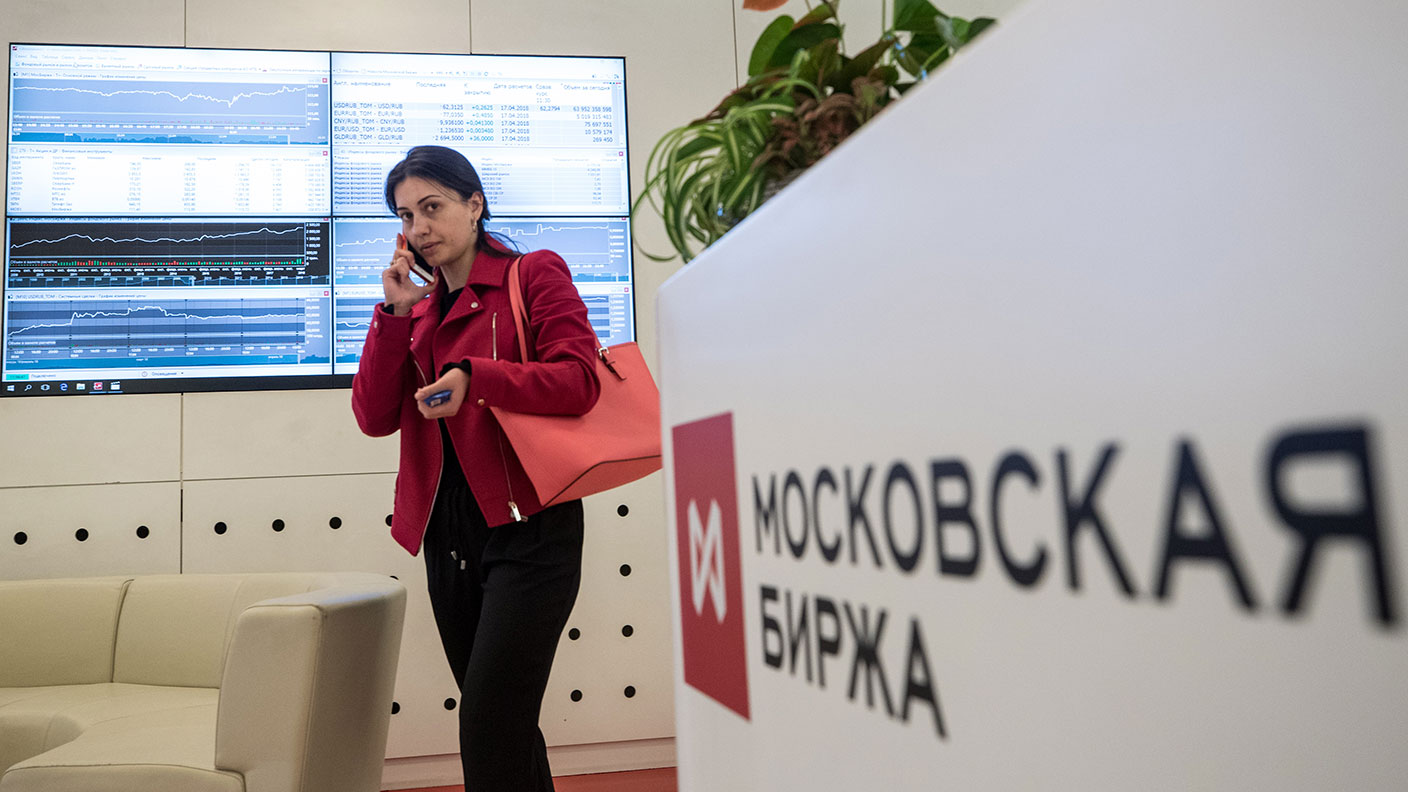Ukraine crisis: for investors, things may well be different this time
Markets have withstood endless shocks in recent years – and investors have usually sailed through unscathed. But Russia’s invasion of Ukraine could prove different, says Merryn Somerset Webb.


You don’t often lose all your money in an equity market. Every year Credit Suisse publishes its Global Investment Returns Yearbook, and in doing so remind us just how well things usually go.
Credit Suisse’s database covers the returns on stocks and bonds for 35 countries; the results are mostly cheering. For example, since 1900 the US stockmarket has given an annualised real return of 6.7% and the rest of the world has returned a perfectly acceptable 4.5%.
In two cases, though, they aren’t particularly cheering: in Russia in 1917 and China in 1949 investors suffered “total losses” after Communist revolutions. Both markets reopened in the 1990s; there were no refunds.
MoneyWeek
Subscribe to MoneyWeek today and get your first six magazine issues absolutely FREE

Sign up to Money Morning
Don't miss the latest investment and personal finances news, market analysis, plus money-saving tips with our free twice-daily newsletter
Don't miss the latest investment and personal finances news, market analysis, plus money-saving tips with our free twice-daily newsletter
The last week, with the Russian invasion of Ukraine, has not been quite on the same scale — but the 33% fall in Russia’s Moex stockmarket index on Thursday was a sharp reminder of the risk that comes with investing. It should also be a reminder of the extent to which uncertainty drives equity prices.
There is endless guff talked about equity valuation, but at its heart it is very simple: a share is worth your forecast of what the total income from it will be over time, discounted for inflation and then discounted again for the extent to which you might be wrong.
The number you are prepared to pay should be nothing more than the sum of the dividends you expect to receive, adjusted for uncertainty. The more confusing the future looks for any particular stock or market, the less you should pay.
Every complicated model you see that looks like it is about something else is actually nothing more than an attempt to get a handle on the likely scale and timing of the income you can expect. That’s it.
So what about Russian equities? They are now, by any measure, cheap. Prices are moving around too fast to be precise, but think a price/earnings ratio of three to four times and a dividend yield of 10%. But they also come with absolute uncertainty — we have no idea quite what the various sanctions currently being announced around the world will end up doing to the earnings bit of the price/earnings equation. For now, that means buying them is not an investment but a speculation.
However, it isn’t just the Russian market that should be worth less as a result of its invasion of Ukraine — pretty much all stockmarkets now have a new overlay of intense uncertainty. The big fund-management PR machine has been pretty active over the past few days, telling us to buy on the sound of cannon and noting that markets have easily brushed off many of the nasty global events of the past few years.
Take the withdrawal from Afghanistan, the North Korean missile crisis and the 2017 bombing of Syria, said one manager: in all cases the market reaction was “surprisingly mild”. Buying the dip was the right thing to do.
It probably won’t be this time because of inflation and the extreme levels of uncertainty it introduces into future income calculations. Ukraine is the world’s biggest exporter of sunflower oil, the second-largest producer of barley and the fourth-largest producer of potatoes; it is also rich in metals and minerals. Add in Russia’s dominance over key strategic metals and you can see the potential for a nasty inflation shock.
• This article was first published in the Financial Times
Get the latest financial news, insights and expert analysis from our award-winning MoneyWeek team, to help you understand what really matters when it comes to your finances.
Merryn Somerset Webb started her career in Tokyo at public broadcaster NHK before becoming a Japanese equity broker at what was then Warburgs. She went on to work at SBC and UBS without moving from her desk in Kamiyacho (it was the age of mergers).
After five years in Japan she returned to work in the UK at Paribas. This soon became BNP Paribas. Again, no desk move was required. On leaving the City, Merryn helped The Week magazine with its City pages before becoming the launch editor of MoneyWeek in 2000 and taking on columns first in the Sunday Times and then in 2009 in the Financial Times
Twenty years on, MoneyWeek is the best-selling financial magazine in the UK. Merryn was its Editor in Chief until 2022. She is now a senior columnist at Bloomberg and host of the Merryn Talks Money podcast - but still writes for Moneyweek monthly.
Merryn is also is a non executive director of two investment trusts – BlackRock Throgmorton, and the Murray Income Investment Trust.
-
 ‘Why I have ditched my Help to Buy ISA for cash savings and the stock market’
‘Why I have ditched my Help to Buy ISA for cash savings and the stock market’Without the 25% bonus, my Help to Buy ISA is effectively redundant, says MoneyWeek writer Sam Walker.
-
 Is your inheritance tax allowance cut if you sell to downsize or sell your home to pay for care?
Is your inheritance tax allowance cut if you sell to downsize or sell your home to pay for care?Downsizing relief is a little-known benefit that could save your loved ones tens of thousands of pounds in inheritance tax after you’ve died.
-
 Halifax: House price slump continues as prices slide for the sixth consecutive month
Halifax: House price slump continues as prices slide for the sixth consecutive monthUK house prices fell again in September as buyers returned, but the slowdown was not as fast as anticipated, latest Halifax data shows. Where are house prices falling the most?
-
 Rents hit a record high - but is the opportunity for buy-to-let investors still strong?
Rents hit a record high - but is the opportunity for buy-to-let investors still strong?UK rent prices have hit a record high with the average hitting over £1,200 a month says Rightmove. Are there still opportunities in buy-to-let?
-
 Pension savers turn to gold investments
Pension savers turn to gold investmentsInvestors are racing to buy gold to protect their pensions from a stock market correction and high inflation, experts say
-
 Where to find the best returns from student accommodation
Where to find the best returns from student accommodationStudent accommodation can be a lucrative investment if you know where to look.
-
 The world’s best bargain stocks
The world’s best bargain stocksSearching for bargain stocks with Alec Cutler of the Orbis Global Balanced Fund, who tells Andrew Van Sickle which sectors are being overlooked.
-
 Revealed: the cheapest cities to own a home in Britain
Revealed: the cheapest cities to own a home in BritainNew research reveals the cheapest cities to own a home, taking account of mortgage payments, utility bills and council tax
-
 UK recession: How to protect your portfolio
UK recession: How to protect your portfolioAs the UK recession is confirmed, we look at ways to protect your wealth.
-
 Buy-to-let returns fall 59% amid higher mortgage rates
Buy-to-let returns fall 59% amid higher mortgage ratesBuy-to-let returns are slumping as the cost of borrowing spirals.
